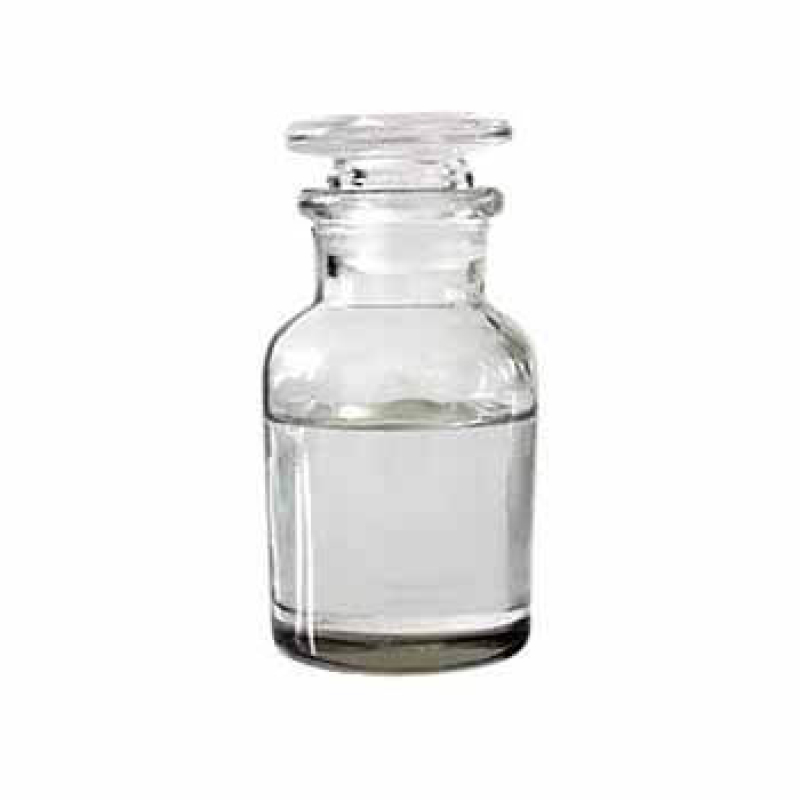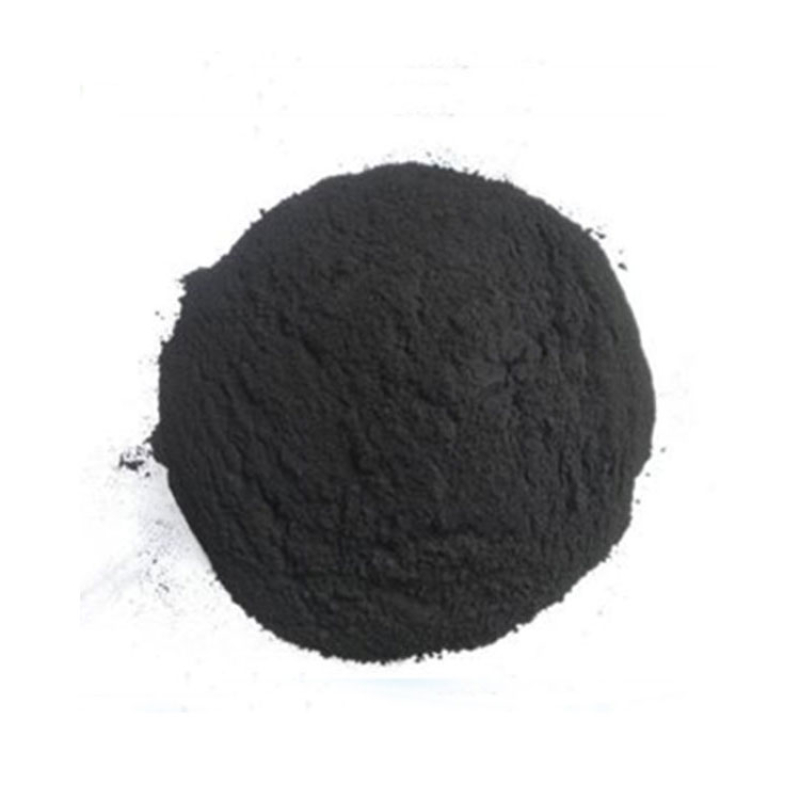Products Description of Carnitine CAS#541-15-1Carnitine is a type of B vitamins. Its structure resembles amino acids, so some people classify it as amino acids. Its main function is to help transport long-chain fatty acids to provide energy. This can prevent fat from accumulating in the heart, liver and skeletal muscle. Artificially synthesized carnitine has three forms: L-isomer, D-isomer and racemate, and L-carnitine has the best effect. L-carnitine is a compound with multiple physiologically active functions.
Contact Now
Products Description of Ethylamine-borontrifluorideCAS#75-23-0Boron trifluoride ethylamine is mainly used as a latent curing agent for epoxy resin.Ethylamine-borontrifluoride Chemical PropertiesMelting point 85-89 °C(lit.)Boiling point 148°C/1mmHg(lit.)density 1,38 g/cm3Fp 157°Cstorage temp. 2-8°Cform solidcolor White to Light yellowPHpH(50g/l, 25℃) : 4.0~5.6Water Solubility Reacts with water.Sensitive Moisture SensitiveBRN 3672802Exposure limitsACGIH: TWA 2.5 mg/m3NIOSH: IDLH 250 mg/m3InChIInChI=1S/C2H6BF3N/c1-2-7-3(4,5)6/h7H,2H2,1H3
Contact Now
Products Description of 3,4-Diaminotoluene CAS#496-72-0 3,4-Diaminotoluene is a chemical with the molecular formula C7H10N2.3,4-Diaminotoluene Chemical PropertiesMelting point 87-89 °C (lit.)Boiling point 155-156 °C/18 mmHg (lit.)density 1.2207 (rough estimate)refractive index 1.5103 (estimate)Fp 155-156°C/18mmstorage temp. Keep in dark place,Inert atmosphere,Room temperaturesolubility Chloroform (Sparingly), Methanol (Slightly)pka4.59±0.10(Predicted)form Crystalline Chunks or Flakescolor Brown to grayish-brownWater Solubility 16 g/L
Contact Now
Products Description of Mix Xylene CAS#1330-20-7Xylene (dimethylbenzene) is a colorless, transparent, aromatic liquid. It is the product of two hydrogen atoms on the benzene ring being replaced by methyl atoms. It has a boiling point of 137-140°C. Xylene is divided into three isomers: o-xylene, m-xylene, and p-xylene according to the positions of the two methyl atoms. In industry, xylene refers to a mixture of the above isomers and ethylbenzene.
Contact Now
Products Description of 6-Methyluracil CAS#626-48-26-Methyluracil is a colorless crystal. The melting point is 311-312℃, and it has also been reported to be 270-280℃ (decomposition). It is soluble in water, hot ethanol and alkaline solution, and slightly soluble in ether.
Contact Now
Products Description of 1,3-Dichloroisoquinoline CAS#7742-73-61,3-Dichloroisoquinoline is a white to brown crystalline powder.1,3-Dichloroisoquinoline Chemical PropertiesMelting point 121-122 °C (lit.)Boiling point 307°C(lit.)density 1.407±0.06 g/cm3(Predicted)storage temp. Inert atmosphere,Room Temperatureform powder to crystalpka-1.49±0.50(Predicted)color Light yellow to Brown to Dark greenCAS DataBase Reference7742-73-6(CAS DataBase Reference)Safety InformationHazard Codes XiRisk Statements 36/37/38Safety Statements 26-36WGK Germany 3HS
Contact Now
Products Description of CERIUM(III) CHLORIDE CAS#7790-86-5White crystalline particles Cerium trichloride is a colorless, deliquescent block crystal or powder. When exposed to humid air, it quickly absorbs water to form hydrates of uncertain composition.
Contact Now
Products Description of Iridium(III) chloride hydrateCAS#14996-61-3Green crystals or brown powder, easily absorbs moisture, dissolves in water and hydrochloric acid, loses crystal water when exposed to strong heat.Iridium(III) chloride hydrate Chemical PropertiesMelting point 763°C (dec.)density 5.3 g/mL at 25 °C(lit.)storage temp. Inert atmosphere,Room Temperaturesolubility 623.82g/l solubleform Crystalscolor BlackPH<2 (H2O, 20℃)Aqueous solutionWater Solubility Soluble in water and alcohol.Merck 14,5088Stability:hygroscopicInChIIn
Contact Now
Products Description of Dioctyl terephthalate CAS#6422-86-2Dioctyl terephthalate (DOTP) is a high-performance main plasticizer for polyvinyl chloride (PVC) plastics. Compared with the commonly used diisooctyl phthalate (DOP), it has the advantages of heat resistance, cold resistance, low volatility, anti-extraction, flexibility and good electrical insulation performance. It shows excellent durability, soap water resistance and low-temperature flexibility in the products.
Contact Now
Products Description of Carnauba wax CAS#8015-86-9Extracted and refined from the leaves and buds of Brazilian palm, it is hard and brittle, insoluble in water, and is a hard, high-melting-point, shiny wax.
Contact Now
Products Description of DL-Limonene CAS#138-86-3Dipentene is a colorless, flammable liquid at room temperature with a pleasant lemon scent.
Contact Now
Products Description of 2,4,5-Trimethoxybenzaldehyde CAS#4460-86-02,4,5-Trimethoxybenzaldehyde is mainly used to prepare asarone. α-Asarone is mainly found in the volatile oils of natural products such as Acorus calamus. It has sedative, prolonged hypnotic and antibacterial effects. It is clinically used to treat mental illnesses such as chronic bronchitis, epilepsy, and coma.
Contact Now
Products Description of Chromium(III) fluoride CAS#7788-97-8Chromium trifluoride, also known as chromium trifluoride, is an inorganic compound with the chemical formula CrF3. It is mainly used as a mothproofing agent for wool fabrics, a halogenation catalyst, a marble hardener and a colorant.On October 27, 2017, the World Health Organization's International Agency for Research on Cancer published a preliminary list of carcinogens for reference.
Contact Now
Products Description of Palladium CAS#7440-05-3Palladium is a transition element of Group III (nickel group) and light platinum metal in the periodic table. It is a silvery-white metal that is moderately hard, moderately forgeable, and ductile. Palladium is an intermediate element in Group 10 of transition elements (periods 4, 5, and 6). Many of its properties are similar to those of nickel, which is above it, and platinum, which is below it, in this group. Palladium is a soft, silvery-white metal that has chemical and physical properties very similar to those of platinum.
Contact Now
Products Description of Benzalkonium chloride CAS#8001-54-5Benzalkonium chloride (BAC for short) is a quaternary ammonium salt compound. As a broad-spectrum fungicide of cationic surfactants, it can effectively control the growth of algae and slime in water, and has good slime stripping effect and certain dispersion and penetration effects. It also has certain degreasing, deodorizing and corrosion inhibition effects.
Contact Now
Products Description of Diphenylacetonitrile CAS#86-29-3The molecular formula of diphenyl acetonitrile is C14H11N, and its melting point is 71-73°C. Boiling point 181 °C (12 mmHg). Flash point 120 °C. WATER SOLUBLE INSOLUBLE. Used as intermediates in organic synthesis.
Contact Now
Products Description of Chromic chloride hexahydrate CAS#10060-12-5Purple monoclinic crystal. Relative density 1.76. Melting point 83℃. Soluble in water, ethanol, slightly soluble in acetone, insoluble in ether. Deliquescent. Toxic!Chromic chloride hexahydrate Chemical PropertiesMelting point 83 °Cdensity 1.76 g/mL at 25 °C(lit.)storage temp. Inert atmosphere,Room Temperaturesolubility Methanol (Slightly), Water (Slightly)form Powder/SolidSpecific Gravity1.76color Reddish-violetPH2.0-3.0Water Solubility Soluble in water and alcohol.
Contact Now
Products Description of Benzalkonium Chloride CAS#63449-41-2Benzalkonium chloride is a cationic surfactant and a non-oxidizing fungicide. It has a broad-spectrum and highly effective bactericidal and algaecidal ability. It can effectively control the growth of algae and slime in water, and has good slime stripping effect and certain dispersion and penetration effects. It also has certain degreasing, deodorizing and corrosion inhibition effects. Benzalkonium chloride has low toxicity, no cumulative toxicity, is easily soluble in water, and is not affected by water hardness.
Contact Now
Products Description of (R)-(-)-2-Methylpiperazine CAS#75336-86-6 White to light yellow crystalline solid.
Contact Now
Products Description of Benzalkonium chloride CAS#63449-41-2Benzalkonium chloride is a cationic surfactant and a non-oxidizing fungicide. It has a broad spectrum and high efficiency in killing bacteria and algae. It can effectively control the reproduction of bacteria and algae and the growth of slime in water. It has good slime stripping effect and certain dispersion and penetration effects. It also has certain degreasing, deodorizing and corrosion inhibition effects.
Contact Now
Products Description of Palmitoylethanolamide (PEA) CAS#544-31-0Palmitoylethanolamide (PEA) is an endogenous fatty acid amide that belongs to the class of nuclear factor agonists.
Contact Now
Products Description of Diacetoneacrylamide CAS#2873-97-4Diacetone acrylamide has two reactive groups: N-substituted amide and ketone. It is very easy to copolymerize with other ethylene and monomers, thereby introducing ketocarbonyl groups into polymers. By utilizing the chemical properties of ketocarbonyl groups, polymers can undergo crosslinking and grafting reactions, and are used to prepare various adhesives, thickeners, paper reinforcing agents, crosslinking agents, etc.
Contact Now
Products Description of Sodium carboxymethyl cellulose CAS#9004-32-4Sodium carboxymethylcellulose (CMC) is a carboxymethylated derivative of cellulose, also known as cellulose gum. It is an anionic cellulose ether and the main ionic cellulose gum. It is usually an anionic polymer compound obtained by reacting natural cellulose with caustic soda and monochloroacetic acid. The molecular weight of the compound ranges from several thousand to millions. CMC is a white or milky white fibrous powder or granule with a density of 0.5-0.7 g/cm3. It is almost odorless and tasteless and hygroscopic.
Contact Now
3,6-Dichloro-4-methylpyridazine CAS#19064-64-33,6-Dichloro-4-methylpyridazine Chemical PropertiesMelting point 86-88 °C (lit.)Boiling point 149-151 °C/21 mmHg (lit.)density 1.5462 (rough estimate)refractive index 1.6300 (estimate)Fp 149-151°C/21mmstorage temp. Keep in dark place,Sealed in dry,Room Temperaturesolubility Methanol[soluble in]solubility soluble in Methanolform Crystalline Powderpka-0.56±0.10(Predicted)color BrownBRN 119573InChIKeyROYHWGZNGMXQEU-UHFFFAOYSA-NCAS DataBase Reference19064-64-3(CAS DataBase Reference)NIST Chem
Contact Now


































